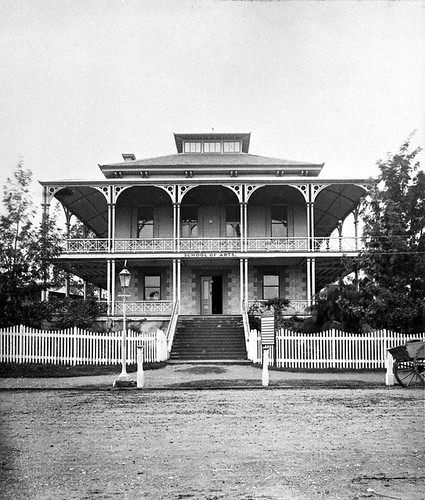Creative Australia: An open door to culture?
The Australian Federal Arts Minister Simon Crean has officially announced the publication of Australia’s new Cultural Policy: Creative Australia. The Creative Australia policy states a coherent approach to culture and, whilst recognising the role culture plays in national identity, it also specifically acknowledges that a creative and productive nation is one that is open.
Creative Australia is informed by the belief that a creative nation is a productive nation in the fullest sense of the word—empathic, respectful, imaginative, industrious, adaptive, open and successful.

School of Arts, Brisbane, around 1900 by [Queensland State Archives](http://www.flickr.com/photos/queenslandstatearchives/) – CC-BY
In her introduction, current Prime Minister Julia Gillard states that Creative Australia “explicitly aims, as a matter of equity, to make the arts more accessible to all Australians”. Interestingly, Creative Australia asserts several times that “culture is not created by government, but enabled by it” and that culture is created by the community. Without expressly stating it, Creative Australia is both giving the green-light for Australians and Australian institutions to move in the direction of an open and accessible culture, and acknowledging the fact that the power to do so rests squarely on the shoulders of the nation’s inhabitants themselves. But is the ambition to be a cultural and productive nation, one in which culture and the arts are more accessible and open to all, an easy one to fulfil?
Accessible culture depends greatly on cooperation and furthermore, is most successful when created upon a firm base of openness and accountability by all partnerships; private, public, and government alike. Creative Australia moves to encourage cooperation by establishing a “national network for museums and galleries”. By sharing resources, Creative Australia expects a resulting increase in “access to collections across Australia, to assist industry, researchers and the public”, yet it is unknown how far this “sharing” will extend and what it will mean for Australia’s creative knowledge.
Particular attention is paid to Australia’s GLAM sector in general, with the intentions for national collecting institutions highlighted throughout. Creative Australia’s broad aims are specifically asserted under the section titled: Access, Interpretation, and innovation for national collections. Here the policy iterates its aims to achieve:
- A population that has been enriched and educated through increased engagement with the national collections no matter where they live.
- An Australian community that embraces national collections as an important national resource for learning, work and pleasure.
- National collections which are more open, accessible and interactive through technological advances.
Put simply, these aims illuminate Creative Australia’s desires to ensure that Australia’s cultural knowledge, the collections and texts that form the cultural bedrock of the nation, are accessible and available to all. “We collect and maintain these items because, together, they tell our story” Creative Australia articulates, and these “are national assets that need to be equally available to all Australians”. Yet simply to say so does not denote the hard work that is still to be done in Australia’s GLAM sector to ensure that the cultural knowledge created and therefore owned by all Australians can be used openly by Australians too. Technological advances are mentioned as integral to ensuring accessibility but what is unclear is just how “open” this cultural knowledge will be.
At one point, Creative Australia states that “culture is created by us and defines us”, and such a formal acknowledgement of the societal importance of culture is something which should be celebrated. However, it is up to the GLAM sector and the people of Australia to take this opportunity themselves and use the Governments words, not only as one step in the continuation of the nation’s journey towards a more accessible future, but also as one towards the further openness of Australia’s cultural knowledge.
